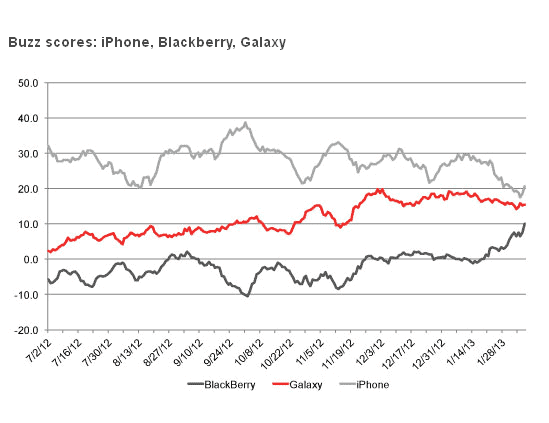
BlackBerry 10 is much better positioned for success than Palm’s WebOS was, says Cormark’s Richard Tse. For years now, an analyst upgrade on RIM seemed about as likely as a positive review of a Nickelback concert in an indie-rock paper.
These days, however, the Waterloo company is awash in praise, never mind that much of it is muted and follows a unprecedented slide in the company’s shares.
Banks such as National Bank Financial, Goldman Sachs, Jeffries and Company and Byron Capital have all reconsidered the value proposition of the BlackBerry maker of late, and decided the worst case scenario and the most likely scenario were a little further apart than they first thought.
Cormark analyst Richard Tse, who upgraded RIM to a BUY in late September, says this is all about the power of the product cycle. Tse says RIM’s transition from BlackBerry 7 to BlackBerry 10 remains an uphill battle, but the company has made unexpected operational progress in the meantime. This execution has derisked the story, he says. The Cormark analyst recently posed the question “Is there more room for upside in RIM’s stock?” and concluded the answer is a definitive “Yes”. In a research update to clients this morning, Tse maintained his BUY rating and raised his target price on RIM to $16, from his previous target of $12.
________________
This article is brought to you by Ackroo (TSXV:AKR). Ackroo enables small to medium sized businesses, independent merchants and business networks to increase profitability and build long-term customer relationships through customized loyalty and rewards programs. Click here for more info.
_________________
Tse says the $16 target is based on the midpoint of RIM’s net-asset value, calculated using the company’s balance sheet and his version of the markdown in its assets. Tse says the risk in the story has become reduced partly because many signs now point to a successful launch of BlackBerry 10. The devices have been in the hands of carriers long enough, he notes, that any negative take would already be front and centre. At very least, he says, the new platform will catch the company up to its competitors.
For those who think BlackBerry 10 will not be a hit, Tse warns the power of the product cycle may supersede even this negativity, at least in the short term. Tse says product cycles can drive equities even when the immediate financials are absent, provided there is strength in the products. He points to Palm; while its mobile operating systems WebOS ultimately failed, the product cycle lifted the stock from about $4 to more than $18.
Tse believes that Palm’s dicey balance sheet may have contributed to a weak WebOS push in terms of into carrier seeding programs, marketing campaigns, developer payments and R&D. He says RIM is, conversely, quite strong in these areas and has a much better cash position.
__________________
___________________
Leave a Reply
You must be logged in to post a comment.




 Share
Share Tweet
Tweet Share
Share




Comment